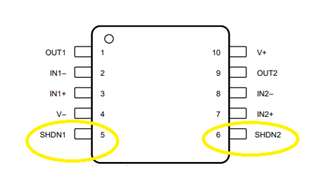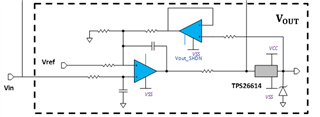Other Parts Discussed in Thread: DAC70502
Hi team,
Currently I want to provide a discrete solution for customers which use DAC70502+OPA2990S/4990S to output both V/I on the same board.
Our AE recommend this circuit for me as below but I want to ask you some questions:
1) Could you kindly help me understand the principle of the voltage output part? How to achieve output +-10V using two op amps?
2) From datasheet, OPA4990S has a shutdown function so it can replace a multiplexer. But it did not specify which two channels are controlled at the same time. So I want to confirm that.

I also attached the one page introduction of this discrete solution for your reference.
ISFA-426_VI_AOUT_onepager.pptx
Many thanks!
Regards,
Maggie






